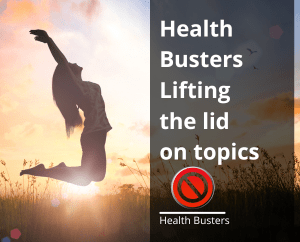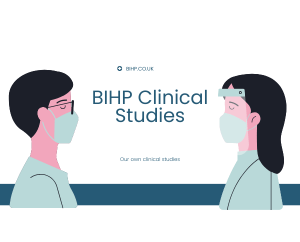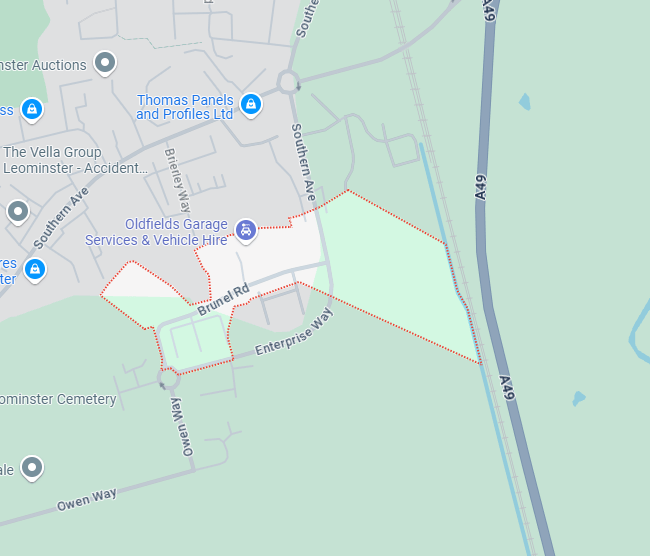Introduction:
Out-of-hospital cardiac arrest in apparently healthy, young adults is a rare but devastating event that often makes headlines when tragedy strikes unexpectedly. Now, a new analysis published in the Journal of the American Medical Association (JAMA) sheds light on just how frequently these incidents occur and what underlying factors might be at play. The findings reveal a stark reality: while such cardiac arrests among people under 40 are uncommon, the chances of surviving one are alarmingly low pubmed.ncbi.nlm.nih.gov. This investigative report examines the scope of the problem, explores hidden causes behind sudden cardiac arrest in youth, and discusses what medical experts say about improving outcomes for those affected.
A Rare but Real Threat in the Young
New research indicates that out-of-hospital cardiac arrest (OHCA) in young adults—defined in the study as under 40 years old—is an infrequent occurrence worldwide. According to the JAMA report, the incidence ranges from roughly 4 to 14 cases per 100,000 people each year across the globe pubmed.ncbi.nlm.nih.gov. In the United States, that translates to only a small fraction of the 350,000 to 450,000 total annual OHCAs involving ostensibly healthy youth pubmed.ncbi.nlm.nih.gov.
Despite being uncommon, these events carry high stakes. When a seemingly healthy person in their twenties or thirties collapses from sudden cardiac arrest, the outcome is often grim. About 60% of these young victims never even make it to the hospital alive, succumbing to what is known as presumed sudden cardiac death before reaching emergency care pubmed.ncbi.nlm.nih.gov. Roughly 40% are resuscitated and transported to a hospital, but even after advanced care, only around 9% to 16% survive to be discharged home pubmed.ncbi.nlm.nih.gov. In other words, fewer than one in six will survive the ordeal. On a hopeful note, those fortunate few who do pull through tend to recover with good neurological function—approximately 90% of survivors have no major brain damage or deficits reported pubmed.ncbi.nlm.nih.gov.
Unraveling the Hidden Causes
What could cause a cardiac arrest in an apparently fit young person with no prior symptoms? Autopsy studies provide critical clues. The JAMA analysis found that in 55% to 69% of young adults who died suddenly, there was an underlying cardiac problem that explained the collapse pubmed.ncbi.nlm.nih.gov. Many of these cases were attributed to Sudden Arrhythmic Death Syndrome (SADS)—a diagnosis given when the heart appears structurally normal upon autopsy, suggesting a fatal heart rhythm disturbance. SADS is notably seen in young athletes who collapse during sports. Other structural heart diseases, such as undetected coronary artery disease or cardiomyopathy, also accounted for a significant share of these sudden deaths pubmed.ncbi.nlm.nih.gov.
However, not all tragedies stem from hidden heart defects. A substantial portion had non-cardiac causes behind the cardiac arrest. Investigators report that a range of other medical emergencies can trigger the heart to stop, including:
- Drug overdose: Severe intoxication from opioids or other drugs can lead to respiratory failure and cardiac arrest.
- Pulmonary embolism: A large blood clot in the lungs can abruptly impair circulation.
- Brain hemorrhage or stroke: Catastrophic events like a subarachnoid hemorrhage (bleeding around the brain) or massive stroke can cause collapse pubmed.ncbi.nlm.nih.gov.
- Seizure or neurological event: A sudden seizure or similar neurological crisis may precede a cardiac arrest.
- Severe allergic reaction (anaphylaxis) or overwhelming infection: Both can send the body into shock, secondarily stopping the heart.
These findings underscore that “sudden cardiac arrest” isn’t always purely a cardiac issue. Dr. Zian Tseng, the study’s lead author from the University of California, San Francisco, has noted in related research that it shouldn’t be surprising when a young person’s sudden collapse sometimes traces back to a non-cardiac origin tctmd.com. In about one-third to nearly half of young sudden death cases, something outside the heart—like a burst aneurysm, a clot, or an overdose—may be to blame. This diversity of causes makes investigating each case absolutely critical.
The Role of Risk Factors in “Healthy” Youth
One of the paradoxical revelations of the JAMA report is that many victims had underlying risk factors despite being considered “healthy.” More than half of the young adults who died suddenly were found to have at least one identifiable cardiovascular risk factor, such as high blood pressure (hypertension) or diabetes pubmed.ncbi.nlm.nih.gov. These conditions often go unnoticed in younger people, but they can quietly damage blood vessels and the heart over time. Their presence in many of the cardiac arrest cases suggests that being young is not a guarantee of being heart-healthy.
Genetic factors can also lurk beneath the surface. Some victims harbored hereditary heart rhythm disorders or muscle diseases—conditions like long QT syndrome or certain cardiomyopathies—that increase the risk of arrhythmias. According to the study, genetic cardiac diseases were identified in roughly 2% to 22% of young survivors of OHCA pubmed.ncbi.nlm.nih.gov, and in an even higher proportion (up to one-third) of those who did not survive (as determined by post-mortem analyses). While these inherited conditions account for a minority of cases, they are important to recognize, especially for family members who might also be at risk.
Aftermath and the Need for Thorough Evaluation
For those who do survive a sudden cardiac arrest, the ordeal is just the beginning of a new chapter of medical care. Experts emphasize that survivors require a comprehensive evaluation to hunt for the cause of their cardiac arrest pubmed.ncbi.nlm.nih.gov. This typically means a battery of tests and exams: detailed blood work (to check for issues like electrolyte imbalances or heart muscle damage markers), toxicology screening for any illicit substances or toxins, electrical heart tracing (electrocardiogram), imaging scans such as chest X-rays and full-body CT scans, and specialized heart imaging like echocardiography pubmed.ncbi.nlm.nih.gov. The goal of this intensive work-up is to identify any treatable problem that triggered the arrest.
If a reversible culprit is found—say, a blocked coronary artery causing a heart attack, or an overdose that can be managed—doctors will address that immediately pubmed.ncbi.nlm.nih.gov. But in many young survivors, the initial tests might not reveal an obvious cause. In such cases, further investigations look for subtler issues: an MRI or advanced echocardiogram might uncover a previously undetected heart muscle disease, or genetic testing might reveal an inherited arrhythmia syndrome.
Importantly, if the cause turns out to be a nonreversible cardiac condition (for example, a structural heart disease or a genetic arrhythmia disorder), guidelines call for implanting a cardioverter-defibrillator in the survivor pubmed.ncbi.nlm.nih.gov. This device, placed under the skin, constantly monitors the heart and can deliver a lifesaving shock if a dangerous arrhythmia strikes again. The JAMA findings stress that this step can be crucial in preventing a second cardiac arrest in high-risk young patients pubmed.ncbi.nlm.nih.gov.
Frequently Asked Questions (FAQs)
Q: What is an out-of-hospital cardiac arrest (OHCA)?
A: An out-of-hospital cardiac arrest is when a person’s heart suddenly stops beating outside of a hospital setting (for instance, at home, work, or in a public place). This is different from a heart attack; in a cardiac arrest, the heart’s electrical system malfunctions and the heart cannot pump blood, leading to collapse. Without immediate emergency measures like CPR and defibrillation, an OHCA is usually fatal within minutes.
Q: How common is sudden cardiac arrest in young, apparently healthy adults?
A: Fortunately, it is relatively uncommon. Global data suggest only about 4 to 14 out of every 100,000 young adults under 40 experience an OHCA each year pubmed.ncbi.nlm.nih.gov. However, in absolute terms this still means thousands of young lives are affected worldwide annually. It’s rare, but when it happens, it often makes headlines because the individuals are not the typical heart patients one would expect.
Q: What causes a seemingly healthy young person’s heart to stop suddenly?
A: Sudden cardiac arrest in the young can have a variety of causes:
- Hidden heart conditions: Many cases are due to undiagnosed heart issues like abnormal heart rhythms (for example, Wolff-Parkinson-White syndrome, long QT syndrome) or structural problems (such as hypertrophic cardiomyopathy or coronary artery anomalies). These can trigger fatal arrhythmias without warning.
- Sudden Arrhythmic Death Syndrome (SADS): In some instances, no structural problem is found even after extensive tests. These are thought to be caused by a sudden electrical malfunction in the heart and are often labeled SADS, especially in young athletes who collapse during exertion.
- Non-cardiac triggers: A significant number of cases actually stem from causes outside the heart. Severe drug overdose, massive pulmonary embolism (blood clot in the lung), brain hemorrhage or stroke, or severe allergic reactions can all lead to a collapse that stops the heart pubmed.ncbi.nlm.nih.gov. Essentially, a catastrophic event in the body causes the heart to arrest secondarily.
Q: Are there any warning signs or risk factors to watch for?
A: Sometimes, sudden cardiac arrest strikes with no warning at all. However, some red flags can include fainting or near-fainting spells during exercise, unexplained chest pain, short episodes of palpitations, or a family history of unexplained sudden deaths. Risk factors like high blood pressure and diabetes can quietly increase risk even in younger people pubmed.ncbi.nlm.nih.gov, so maintaining a healthy lifestyle and regular check-ups is important. Athletes are often advised to undergo screening for hidden heart conditions, especially if they have symptoms or a concerning family history.
Q: What can be done to improve survival if someone has an out-of-hospital cardiac arrest?
A: Survival from OHCA largely depends on how quickly the person receives help. If you witness someone collapse and suspect a cardiac arrest (they are unresponsive and not breathing normally), call emergency services immediately. Begin CPR right away and have someone locate an automated external defibrillator (AED) if available. Rapid CPR can keep blood flowing to vital organs, and an AED can shock the heart back into a normal rhythm if it’s a shockable arrhythmia. Young victims can often respond well to CPR and defibrillation if delivered promptly. On a broader level, increasing public CPR training and placing AEDs in schools, gyms, and other public venues are measures known to improve survival rates from sudden cardiac arrests.
Q: How is cardiac arrest different from a heart attack?
A: A heart attack is a circulation problem – it happens when blood flow to part of the heart is blocked (usually by a clot in a coronary artery), which can damage the heart muscle. The person is usually awake and may experience chest pain and other symptoms. Cardiac arrest, on the other hand, is an electrical problem – the heart suddenly stops beating effectively. A heart attack can sometimes lead to a cardiac arrest, but cardiac arrest can also be caused by non-cardiac issues or purely electrical malfunctions. In a cardiac arrest, the person will collapse, lose consciousness, and have no pulse. It requires immediate action (CPR and defibrillation), whereas a heart attack requires urgent medical care but not the instantaneous resuscitation that cardiac arrest does.
Conclusion
Out-of-hospital cardiac arrest in apparently healthy young adults remains an uncommon but profoundly impactful occurrence. The latest insights from JAMA’s research highlight that even among youth, hidden health issues—be it a silent heart condition or an unsuspected systemic problem—can precipitate a life-threatening cardiac event. The sobering survival statistics pubmed.ncbi.nlm.nih.gov serve as a reminder of how critical every second is in responding to such emergencies. They also reinforce the importance of vigilance: young people should not ignore potential warning signs, and having basic lifesaving skills in the community can make the difference between life and death.
In summary, what was once thought of as a bolt from the blue often has underlying factors that we are beginning to understand better. By identifying and addressing risk factors early, improving emergency response, and providing survivors with thorough follow-up care (including necessary devices like defibrillators pubmed.ncbi.nlm.nih.gov), medical professionals hope to reduce the toll of sudden cardiac arrest in the young. This emerging knowledge arms us with a clearer picture of a silent threat—and with it, the opportunity to save more lives.
We hope you found this article of interest and if so here are a couple of related links you may well want to have a read through.





